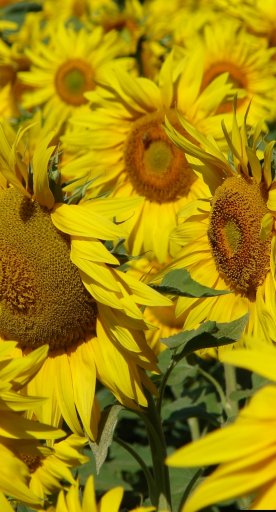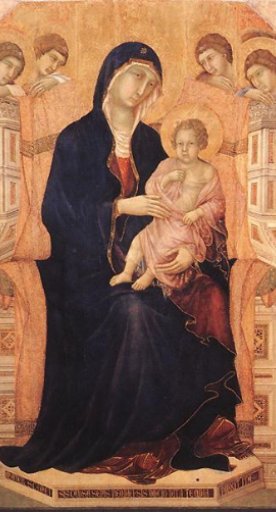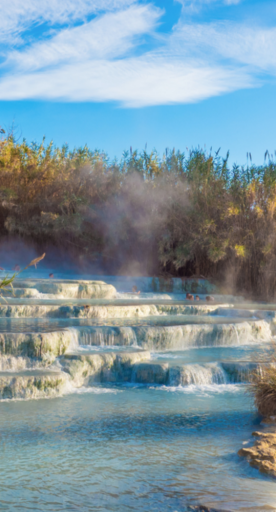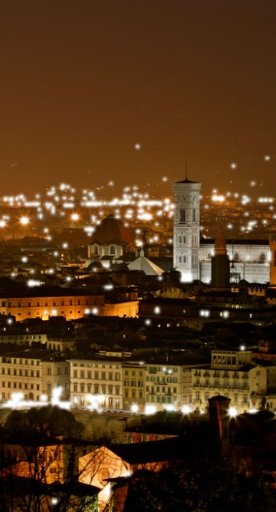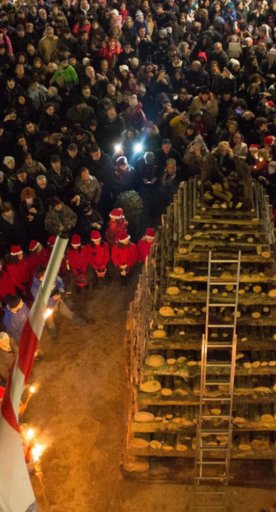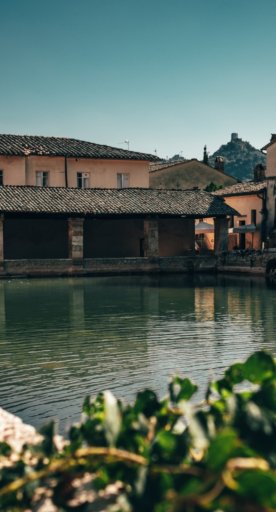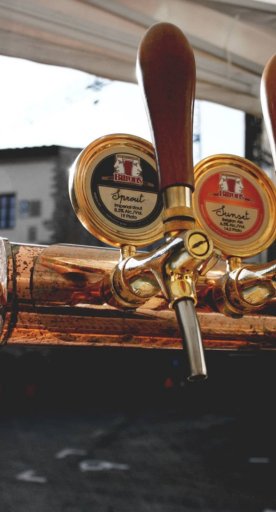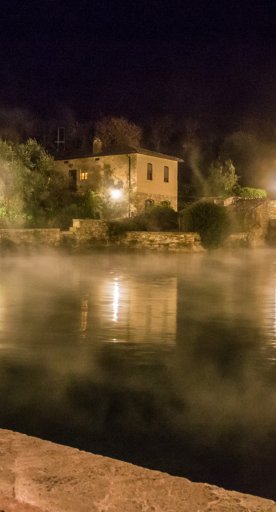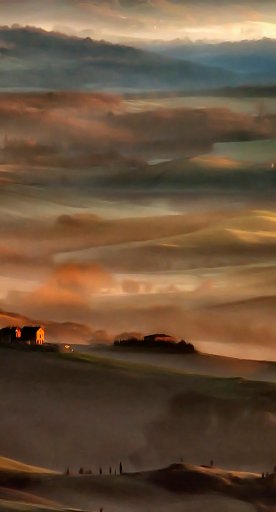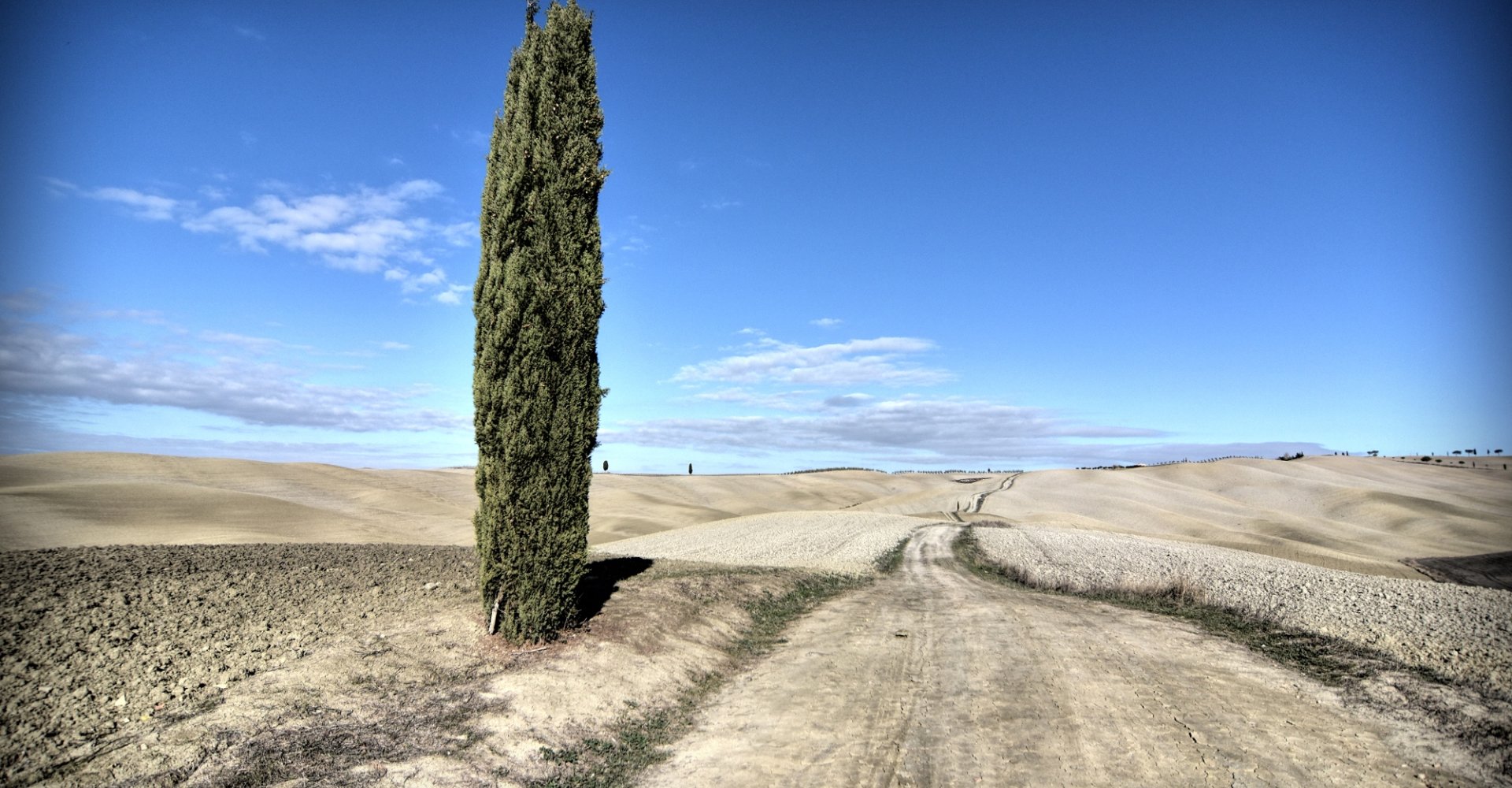

San Quirico: a gift of the via Francigena
A safe and hospitable place for pilgrims over the centuries
San Quirico is one of the five municipalities making up the Val d’Orcia, one of the most spectacular Tuscan landscapes. Unlike others of the region, it was human-designed to make the steep badlands better fit for cultivation. It was out of this mission that the area’s unmistakeable, rolling hills, today embellished with rows of cypress trees and picturesque villages, came to be.
San Quirico is halfway between Siena and Rome, which made it a stop along the 990 CE return journey of the Archbishop Sigeric (“Sigeric the Serious”) to Canterbury. From that moment, San Quirico became a standard part of the Via Francigena pilgrimage itinerary, being just north of the point where the road became papal territory.
-
1.Church of Santa Maria Assunta
-
2.Hospitality and refuge areas
-
3.Two buildings symbol of the city
Church of Santa Maria Assunta

The Via Francigena formed both the destiny and the topography of this town: its center is built around the road, which pilgrims have been crossing over for centuries. Due to its constant flow of travellers, over the years San Quirico constructed various hospitality centers and lodgings, both in a physical and spiritual sense.
It’s for this reason that the Church of Santa Maria Assunta has its principal entrance not on the main facade, but on the side, which opens right onto the Via Francigena, and is therefore immediately visible to pilgrims passing by. It’s a small Romanesque church, but the entryway is quite refined, produced by the same stonecutters of the abbey of Sant’Antimo.
Right in front of the church, on the other side of the street, from an arch, you can access the Spedale, just one of the many “branches” that the large Spedale della Scala of Siena had along the Tuscan stretch of the Via Francigena.
Hospitality and refuge areas

Pilgrims were in need of refuge and care, and so the Spedale (a sort of combination-hospitality and healthcare center) set up some lands where they grew food for the numerous visitors.
Another hospitality and refuge area was the Leonini Gardens, accessible through three different entrances, with one of them right in front of the church of Santa Maria Assunta. All was well within easy reach for weary travellers, from physical rejuvenation to that of the more spiritual variety.
The Leonini Gardens, created by the architect Diomede Leoni, are a beautiful example of an Italian-style garden, where the boxwood hedges forming a Malta cross give way to a holly oak wood. Watching over the garden, where its more contrived and natural elements meet, is the two-faced statue of Giano, a divinity that Romans commonly placed at intersections as a symbol of good fortune.
People can enter freely into the Gardens, and it’s been this way since the beginning, because this was always a place aimed at offering pilgrims quiet spiritual respite.
Two buildings symbol of the city

Continuing to walk along the stretch of the Francigena that crosses San Quirico, you’ll come across two other important buildings. The first is a church dedicated to the martyrs Giulitta and Quirico, which also has its entrance facing the street side. Quirico was Giulitta’s son, and they were both killed for refusing to renounce their Christianity. It was practically inevitable that that child, given his pure soul, would go on to become a symbol and namesake for the town.
In piazza della Collegiata, a beautiful building that seems transported directly from central Rome stands tall. It is the Palazzo Chigi Zondadari, constructed at the behest of Cardinal Flavio Chigi in 1679.
Through reading the story of Cardinal Nepote on the Tuscany, Beautiful Everywhere website, I discovered that this palazzo was initially intended to be placed in the Leonini Gardens, but it was instead built on the piazza della Collegiata because there were no space limitations, allowing for an even more spectacular result.
The interiors are indeed beautiful, especially the frescoes of the halls and corridors that depict pastoral scenes and starry skies with constellations and Zodiac signs. San Quirico is a wonderful example of how just meandering through a Tuscan town can lead you on an interesting walk through history.



What’s nearby?






